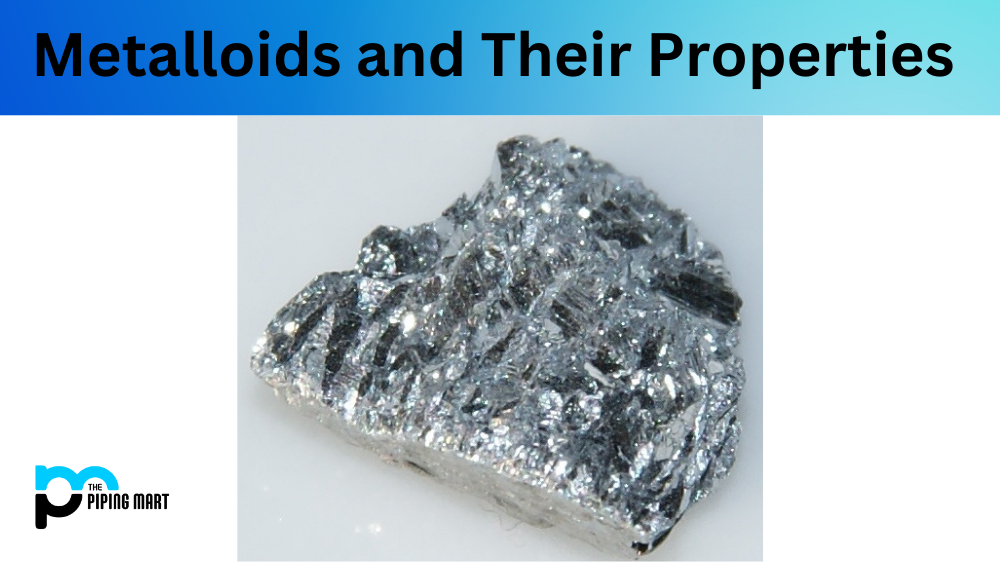Metalloids are elements with properties that blend between those of metals and non-metals. These elements, also known as semi-metals, are located in the middle of the periodic table and can act as either an insulator or a conductor. They have a wide range of uses and properties, which make them essential components in many industries. Let’s take a look at metalloids and why they are so important.
What is Metalloids?
Metalloids consist of five main elements: boron, silicon, germanium, arsenic, and antimony. These elements share traits from both regular metals and non-metals; for example, they have lower electrical conductivity than regular metals but higher than non-metals. They can also be found in both crystalline (solid) or amorphous (liquid) forms, depending on their application.
Metalloids Uses
Metalloids have a broad range of uses due to their unique properties. Boron is frequently used in nuclear reactors due to its high neutron absorption rate; it can also be used to produce alloys such as boron steel which is stronger than regular steel while still being lightweight. Silicon is used in semiconductor chips, solar cells, and microprocessors; it is also essential for the production of glass fibers which are used to make optical cables for telecommunications networks. Germanium has applications in electronics due to its ability to amplify signals; it is also used as an alloying agent in copper alloys because it increases strength while reducing electrical resistivity. Arsenic is primarily used to manufacture pesticides but can also be added to lead alloys as a hardening agent or in thermoelectric devices due to its low thermal expansion coefficient (which makes it useful for temperature regulation). Finally, antimony is often found as an alloy with lead because it increases strength and durability; this same property makes it suitable for use in metal bearings where there is high friction or temperatures involved.
Metalloids properties
Metalloids have unique properties that set them apart from other elements. These elements, which are found in between the metals and nonmetals on the periodic table of elements, have physical, chemical, and thermal properties that are similar to both metals and nonmetals. Metalloids generally have good electrical conductivity like most metals, but unlike many metals they often exhibit semiconductor properties. This means they can be used in electronic components such as transistors and solar cells. Metalloids are also able to form alloys with some metals, allowing them to be used more effectively in certain applications than pure metals would. They also tend to possess higher melting points than nonmetals while still being softer than most pure metal materials. Overall, metalloids provide a diverse array of capabilities making them important in modern technology.
- Metalloids are elements that have properties of both metals and non-metals.
- Metalloids are found in a diagonal line on the periodic table.
- The most common metalloids are silicon, germanium, arsenic, antimony, and tellurium.
- Metalloids have both metallic and non-metallic properties. For example, they can conduct electricity and heat, but they are also brittle and have poor electrical conductivity.
- Metalloids are used in a variety of applications, including semiconductors, solar cells, and alloys.
- Some metalloids, such as arsenic and antimony, are toxic to humans
Conclusion
So there you have it—an overview of metalloids! Metalloids are incredibly versatile elements that have unique properties that make them useful for many different applications, such as semiconductors, solar cells, lead alloys, thermoelectric devices, optical cables, and more! Whether you’re looking at using them yourself or just want to learn more about these fascinating substances, we hope this article gave you some insight into metalloid properties and uses!

Pipingmart is a B2B portal that specializes in metal, industrial and piping items. Additionally, we share the latest information and information about materials, products and various types of grades to assist businesses that are involved in this business.




